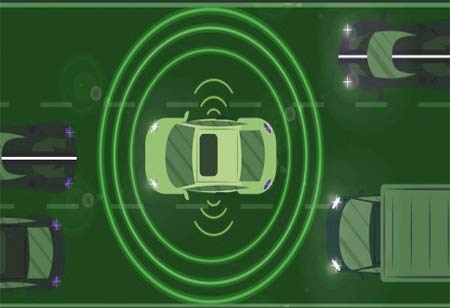THANK YOU FOR SUBSCRIBING
THANK YOU FOR SUBSCRIBING
Be first to read the latest tech news, Industry Leader's Insights, and CIO interviews of medium and large enterprises exclusively from Auto Tech Outlook

By
Auto Tech Outlook | Friday, December 22, 2023
Stay ahead of the industry with exclusive feature stories on the top companies, expert insights and the latest news delivered straight to your inbox. Subscribe today.
Investment in infrastructure is robust, but the sluggish uptake of EVs makes it difficult for local governments to justify spending more.
FREMONT, CA: Electric vehicles (EVs) could still encounter obstacles even though many of the market's first stumbling blocks get resolved. Like many Original Equipment Manufacturers (OEMs), the electric car industry has struggled to meet market demand over the past few years. Despite introducing cheaper brands, purchasing new EVs remains prohibitive for many consumers. Less infrastructure will result in slower adoption, leading to less investment. Infrastructure must be given uniformly across the nation to maintain momentum. Though the sector has reached a tipping point that will allow new electric cars (EVs) to flood the market and aid in the transition from fossil fuels, the industry still faces numerous challenges.
Universal fast charging is still debatable: The lack of a worldwide standard socket for DC fast charging, often known as Level 3, is unfortunate for consumers. Numerous original equipment manufacturers say the absence of early standards is advantageous since it permits manufacturers to experiment and fosters innovation. However, this is damaging to the consumer in the long run. Range anxiety is a significant barrier to switching new customers from internal combustion engine (ICE) automobiles to electric vehicles. Customers who think they cannot locate a sufficient charging alternative in an emergency are less inclined to switch.
The rising price of charging: Regarding universal charging, the responsibility does not end there. The ongoing energy crisis has caused great concern among EV drivers regarding charging expenses, as residential electricity costs have skyrocketed by 65 percent over the past year. Owning an EV is much less expensive if the vehicle gets primarily charged at home. However, this does not help EV users without home or workplace charging station access. Using public rapidly and ultra-rapid chargers is marginally less expensive than fossil fuels.
Persistent supply chain interruptions: Due to global supply chain disruptions caused by numerous international events, most notably COVID-19, many vital resources required for EV production are in limited supply. This is especially true for semiconductors and lithium-ion batteries, which, for various reasons, lack a sufficient supply chain to meet current demand. Enterprises are sourcing new materials for battery production and recycling materials from old batteries to facilitate the supply chain.
Rural areas lack infrastructure: A genuine issue frequently leveled at the EV industry is the absence of suitable charging infrastructure, which prevents many consumers from converting from internal combustion engine (ICE) automobiles. Many opponents still believe that by 2030, demand will significantly outrun supply, leaving many drivers in a difficult position. While most major cities have witnessed sufficient development in infrastructure, rural areas have yet to catch up.
 Copyright © 2025 AutoTech Outlook. All Rights Reserved | Privacy Policy | Subscribe | Sitemap | About us | Feedback Policy | Editorial Policy
Copyright © 2025 AutoTech Outlook. All Rights Reserved | Privacy Policy | Subscribe | Sitemap | About us | Feedback Policy | Editorial Policy 
However, if you would like to share the information in this article, you may use the link below:
https://www.autotechoutlookapac.com/news/obstacles-for-electric-vehicles-nwid-1428.html




